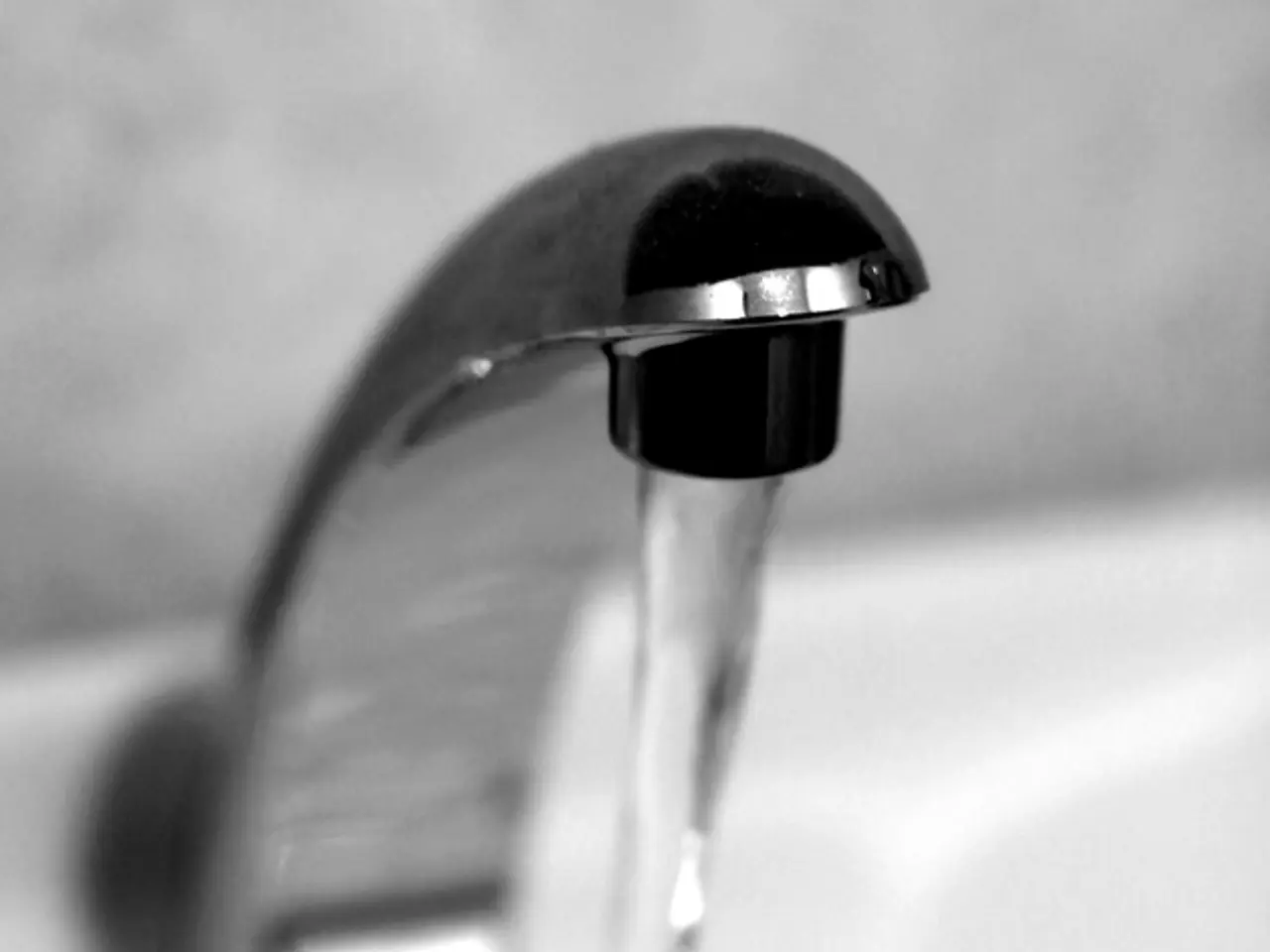Scientists at Argonne National Laboratory create innovative membrane technology for extracting lithium from water supplies.
Argonne National Laboratory and the University of Chicago have developed a groundbreaking membrane technology for extracting lithium from water, offering a potential low-cost and abundant alternative to traditional methods. This innovative technology, made from vermiculite - a naturally abundant clay, could address possible supply chain problems and revolutionize lithium sourcing.
The new membrane technology operates by filtering lithium ions more precisely than previous methods, overcoming the inefficiencies of earlier technologies. In lab tests, the membrane has demonstrated remarkable efficiency in selectively filtering lithium ions from seawater, making it a potentially sustainable and less resource-intensive alternative to conventional mining.
The membrane's structure includes microscopic aluminum oxide pillars to prevent collapse and neutralize the membrane's negative surface charge. This bio-inspired, tunable membrane system controls chemical transport at the atomic scale, incorporating ion-induced dipole interactions to simulate and optimize ion transport through nanochannels.
Potential Applications and Implications for the Lithium Market:
This new technology could have far-reaching applications, beyond just lithium extraction. It could potentially be adapted for use in regions lacking traditional lithium deposits, supporting decentralized and domestic lithium supply. The technology benefits clean-energy sectors, such as electric vehicle batteries and grid energy storage, by offering a more sustainable lithium supply chain.
The potential market and environmental implications are significant. The technology could reduce environmental degradation associated with conventional lithium mining, minimize geopolitical risks linked to current lithium production concentrated in a few locations, and align with climate-resilient resource extraction. The commercialization timeline suggests potential market contributions beginning around 2030-2032, coinciding with peak lithium demand driven by electric vehicle growth.
Currently, the technology is in the R&D and laboratory testing phases. Researchers are optimizing membrane composition and durability, and upcoming steps include pilot projects and eventual commercial-scale demonstration plants, expected within 5-10 years.
First author Yining Liu, a Ph.D. candidate at UChicago and a member of the AMEWS team, believes the new membrane can pull lithium out of water with greater efficiency. Liu also suggests the clay material could help collect critical elements from seawater, salt lake brines, or even help clean up drinking water. The modified membrane repels magnesium ions more forcefully than it does lithium ions due to differences in their charges, allowing for easier lithium ion capture.
This vermiculite membrane technology could significantly diversify and expand lithium supply, reduce environmental impacts, and stabilize the lithium market just as global demand intensifies for sustainable energy technologies. The research was funded by AMEWS, an Energy Frontier Research Center funded by the DOE Office of Basic Energy Sciences, and the findings first appeared in the journal Advanced Materials.
- This vermiculite membrane technology, currently in development at Argonne National Laboratory and the University of Chicago, not only shows promise for more efficient lithium extraction but could also be adapted to collect critical elements from various water sources, such as seawater, salt lake brines, or even help clean up drinking water.
- The potential implementation of this groundbreaking technology could significantly impact the global lithium market, particularly as demands for sustainable energy technologies increase, by diversifying and expanding lithium supply, reducing environmental impacts, and helping to stabilize market fluctuations.




